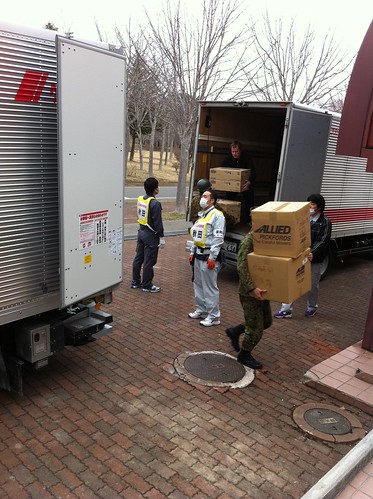This is an excerpt from a field report gathered by Hope International Development Agency Japan’s (HOPE-JP) volunteers working on Oshima Island in Miyagi Prefecture. It illustrates how important it is for an organization to continually gather reliable intelligence on the situation in the areas within which they operate. In the short term, this means meeting basic needs, but we can start to make predictions on the long term rebuilding needs of the communities as well by listening carefully to the local people’s concerns, fears, and first hand observations.
Field report from the 27th of April 2011
Ranta, HOPE-JP volunteer, walked around Oshima talking with local people about their situation and what they might need. An old woman working in a small food shop said that products are beginning to be distributed and she is now able to sell and buy food once again; there is still no beef, pork or chicken available but fish sausages are available, as well as sake and beer. She has heard that supermarkets in Kesennuma will reopen soon and she is hoping to return to near normal eating habits.
An old fisherman reported that after a bit tsunami during the Meiji period which claimed 6 family members his family moved to a higher area of the island and thankfully his home and his family were spared any damage during this tsunami. The island is hoping to produce konbu or wakame (types of seaweed) this year but that squid and octopus fishing will take over five years to return to normalcy. Many fishermen are planning to leave the island to find work in other areas. The beach and port have sunk by 70 centimeters.











